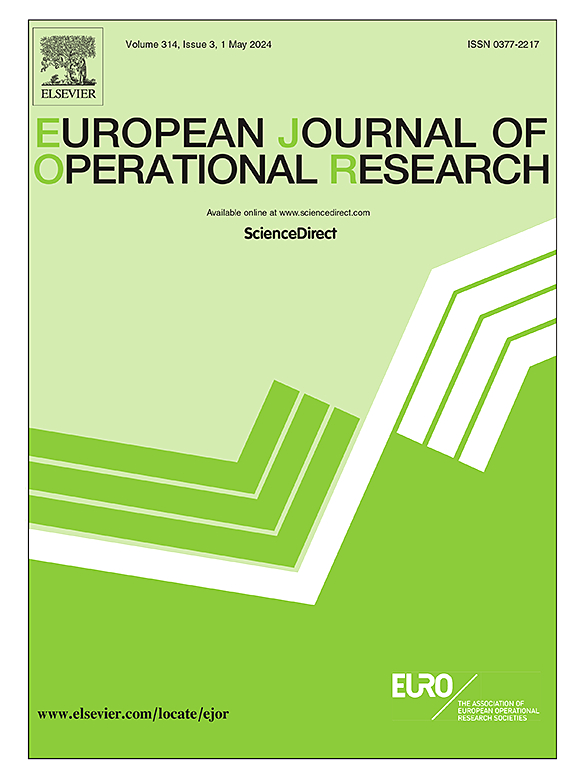Distributionally robust optimization with generalized total variation ambiguity sets
IF 6
2区 管理学
Q1 OPERATIONS RESEARCH & MANAGEMENT SCIENCE
引用次数: 0
Abstract
This paper introduces a data-driven framework for distributionally robust optimization (DRO), founded on a new class of ambiguity sets termed generalized total variation (GTV) sets. In contrast to traditional DRO approaches, the proposed scheme constructs ambiguity sets whose geometry incorporates sample size, support, confidence level, empirical distribution, and cost function structure. Under this framework, we develop two tractable solution methods (first-order, gradient-based), each offering finite-sample statistical guarantees. The first-order approach employs sequential convex programming to construct a solution, followed by a linear program to determine a high-confidence upper bound (i.e., generalization bound) on the solution’s unknown true risk. The gradient-based approach, applicable when the ambiguity set has a smoothly curved boundary, utilizes gradient information to establish a high-confidence upper bound through a sequence of convex programs, all linear except for the final step. We prove that both methods produce statistically consistent risk estimates. Then, we empirically validate the framework on two applications: a synthetic two-item Newsvendor problem and a real-world portfolio optimization problem using S&P 500 asset returns. Results demonstrate that for finite support problems, GTV ambiguity sets can deliver generalization bounds that are as tight as, or tighter than, those from popular alternatives such as Wasserstein and total variation ambiguity sets. We thus highlight the practical benefits of incorporating several types of information into ambiguity set construction, offering improved robustness-performance tradeoffs for data-driven decision-making under uncertainty.
广义总变分模糊集的分布鲁棒优化
本文介绍了一种数据驱动的分布式鲁棒优化框架,该框架建立在一类新的模糊集——广义总变差集的基础上。与传统的DRO方法相比,该方案构建了模糊集,其几何结构包含样本量、支持度、置信度、经验分布和成本函数结构。在此框架下,我们开发了两种易于处理的求解方法(一阶,基于梯度),每种方法都提供有限样本统计保证。一阶方法采用序列凸规划构造解,然后通过线性规划确定解的未知真风险的高置信度上界(即泛化界)。基于梯度的方法适用于模糊集具有光滑弯曲边界的情况,它利用梯度信息通过一系列凸规划(除最后一步外均为线性)建立高置信度上界。我们证明这两种方法产生统计上一致的风险估计。然后,我们在两个应用程序上对该框架进行了经验验证:一个综合的两项新闻供应商问题和一个使用标准普尔500资产回报的真实投资组合优化问题。结果表明,对于有限支持问题,GTV模糊集可以提供与Wasserstein和总变异模糊集等流行替代方法一样严格或更严格的泛化边界。因此,我们强调了将几种类型的信息合并到模糊集构建中的实际好处,为不确定情况下数据驱动的决策提供了改进的鲁棒性和性能权衡。
本文章由计算机程序翻译,如有差异,请以英文原文为准。
求助全文
约1分钟内获得全文
求助全文
来源期刊

European Journal of Operational Research
管理科学-运筹学与管理科学
CiteScore
11.90
自引率
9.40%
发文量
786
审稿时长
8.2 months
期刊介绍:
The European Journal of Operational Research (EJOR) publishes high quality, original papers that contribute to the methodology of operational research (OR) and to the practice of decision making.
 求助内容:
求助内容: 应助结果提醒方式:
应助结果提醒方式:


